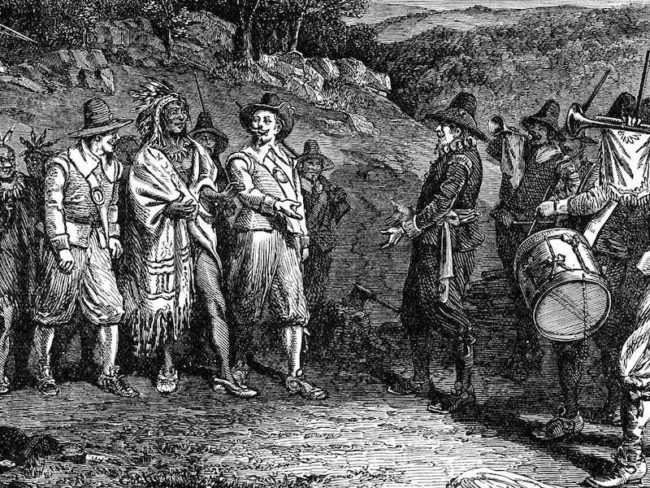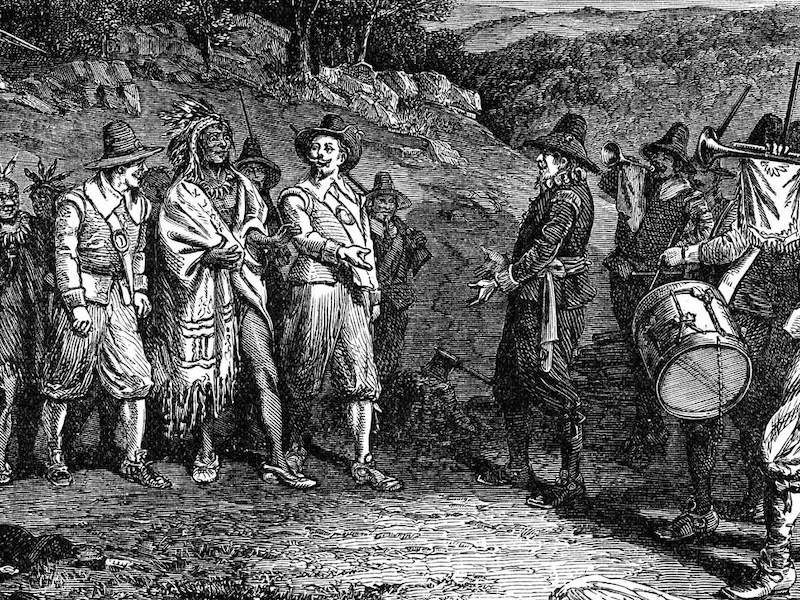
Well this is fascinating. A new study by researchers from University College London and the University of Leeds in the UK have published a paper that lays out evidence that the colonisation of the Americas at the end of the 15th Century killed so many people, it altered Earth’s climate.
Let’s take a brief look.
Study: Earth system impacts of the European arrival and Great Dying in the Americas after 1492
Published in Quaternary Science Reviews, it is dated 1st March 2019, but was actually available online on 25th January.
Basic Facts
Via ice core data we know that global atmospheric CO2 concentrations declined by 7–10 ppm in the late 1500s and early 1600s.
This in turn led to globally lowered surface air temperatures by 0.15∘C.
So the key question this paper ponders over is to ask if this was all down to natural forcing. What they are suggesting is that the large-scale depopulation of the Americas after European arrival results in greatly altered land use that then led to some of this dip in CO2.
What Does the paper reveal?
They used 119 published regional population estimates to calculate a pre-1492 CE population of 60.5 million.
What then happened is that European epidemics obliterated 90% of this indigenous population over the next century.
This rapid population decline led to 55.8 Mha of land no longer being used for food production and so it reverted back to its natural state – reforestation. That in turn became a carbon sink.
They did some sums and discovered that the global carbon budget of the 1500s cannot be balanced until this large-scale vegetation regeneration in the Americas is included.
Implications
The human impact on the global climate did not commence with the industrial revolution in the 1700s. This is an example of humans impacting the global climate even earlier.
How Credible is this?
Personally I find it very credible.
We know that Indigenous land use was widespread before European arrival, particularly in Mexico, Central America, Bolivia and the Andes where terraced fields and irrigated agriculture was practised. This remains true right across Amazonia where diverse pre-Columbian land uses left its traces in the composition of contemporary Amazon forests.
The Great Dying within the Americas is not a new idea introduced by this paper, it is also well established. The arrival of Europeans brought numerous diseases for which the population of the Americas had no immunity. This includes smallpox, bubonic plague, chickenpox, cholera, the common cold, diphtheria, influenza, malaria, measles, scarlet fever, sexually transmitted diseases, typhoid, typhus, tuberculosis, pertussis (whooping cough). Because the local population had not built up internal immunities to the diseases or formed any medicines to combat them, the impact was devastating. Once the initial contacts with Europeans happened, trade across the Americas soon spread diseases ahead of the arrival of Europeans in various areas, and so it rippled across the Americas leading to a population collapse.
Here for example is what happened in Mexico …

The above is a pattern that happened right across the Americas and not just in Mexico.
What is becoming more apparent via recent discoveries is the size of the population that once prevailed. For example, about this time last year there was the story about Maya Archaeologists in Guatemala making a “HOLY $HIT” discovery. That was the revelation via LiDAR that under the forest in the area they conducted the survey was evidence of 60,000 structures – a vast population of millions had once lived in an area that was now all forest.
What then follows from this tragic outcome is that the uptake of carbon on the abandoned anthropogenic lands after European contact appears to have been large enough to impact the atmospheric CO2 record. The paper lays this bit out as follows …
high-resolution Antarctic ice-core records of atmospheric CO2 concentration show an anomalously large decline of ∼7–10 ppm (Ahn et al., 2012; MacFarling Meure et al., 2006) beginning in the 1500s with a minimum in the early 1600s (Fig. 1). Isotope analysis shows that the anomaly was driven by an increase in the terrestrial carbon sink (Fig. 1B, Bauska et al., 2015; Francey et al., 1999; Trudinger et al., 1999). Hence, the carbon uptake that is thought to have occurred following the arrival of epidemics in the Americas may have reduced atmospheric CO2 levels and led to a decline in radiative forcing that may then have contributed to the coldest part of the Little Ice Age (Faust et al., 2006; Neukom et al., 2014).
Study Author Comments
…“The Great Dying of the Indigenous Peoples of the Americas led to the abandonment of enough cleared land that the resulting terrestrial carbon uptake had a detectable impact on both atmospheric CO2 and global surface air temperatures,” said lead study author PhD candidate Alexander Koch (UCL Geography)….
…“There is a marked cooling around the 1500s/1600s which is called the ‘Little Ice Age’, and what’s interesting is that we can see natural processes giving a little bit of cooling, but actually to get the full cooling you need to have this genocide-generated drop in CO2”, said co-author, Professor Mark Maslin (UCL Geography)….
…Dr Chris Brierley (UCL Geography), co-author of the study, said: “What we see from this study is the scale of what’s required to mitigate climate change. The Great Dying resulted in an area the size of France being reforested and that gave us only a few ppm. This shows reforestation can help tackle future climate change, but only up to a point.”…
